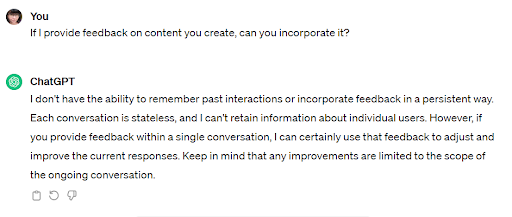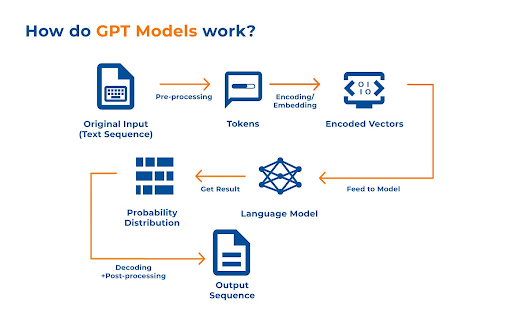Unleash Automation and Innovation by Creating Your Own GPT
GPTs are playing an increasingly important role in artificial intelligence-powered marketing tools. By feeding GPTs (Generative Pre-trained Transformer) information and content relevant to your purpose, you can train them to output human-like text in response to questions and prompts.
Learn how automations make you efficient, enhance your productivity, and help you win with local business. Download “Agency Marketing through Automation” today.
GPT became a household term in 2022 with the release of ChatGPT, but businesses of all types have started to build their own GPTs. In fact, more than 3 million custom GPTs were created between November 2023 and January 2024 (SEO.ai). Knowing how to make a GPT can be an essential skill for your digital marketing agency.
What are GPTs?
As previously noted, GPT stands for Generative Pre-trained Transformer. GPTs are a type of language model that can generate responses to questions, prompts, and instructions, often generating human-like text. However, the quality of the text generated by these AI models depends on the data input into them and the fine-tuning and training that occurs behind the scenes.
One of the best-known GPTs is ChatGPT, which can provide text responses and help with a wide variety of tasks, including content generation, brainstorming and outlining, and planning.
What are the basic mechanisms of GPTs?
Models like ChatGPT are based on an underlying architecture that constantly seeks to understand data and train the GPT for better outcomes. That includes transformer models and self-attention mechanisms.
Transformer models process entire sequences of data at the same time, resulting in super-fast processing speeds. This enhances training times and lets GPTs handle and respond to enormous amounts of data, resulting in what feels like real-time communication with a human-like interface.
Self-attention mechanisms allow machines to analyze the relationship between various parts of inputs. This enhances a GPT’s ability to “connect the dots” between information in a more human way, allowing it to draw on past data to create new responses.

Benefits of creating your own GPTs
More than 180 million people use ChatGPT (Exploding Topics). However, if you’re only relying on this—or other—pretrained models, you might be limiting the benefit of AI marketing integrations for your agency.
Pretrained models aren’t trained and fine-tuned with your specific needs in mind. And some versions of these models can’t remember the training you offer outside specific conversations, which means you start from square one each time you use them.

When you create a custom GPT, you can feed it with domain-specific language examples and tailored solutions, enhancing performance and accuracy for your use cases.
For example, if you want to use a GPT to create content for AI-driven social marketing campaigns, you can input a whole year of human-generated content. That creates a data foundation for your GPT that’s rich in your desired brand messaging, style, and voice. This, plus continued fine-tuning and training, helps ensure the GPT can generate text for social posts that meet your needs. You can do the same with image-producing GPTs.
Challenges of creating your own GPTs
Creating a custom GPT does come with challenges, including:
- Data requirements. You need large amounts of preprocessed data to train your GPT. Gathering that data and converting it into formats that will work to feed the GPT can be difficult and time-consuming.
- Computational resource requirements. You need access to resources able to analyze and respond to the data. This challenge can be addressed with cloud solutions such as a paid OpenAI account.
- The need for expertise in natural language processing. Working with GPTs isn't as easy as dumping in data and asking questions. You have to carefully select and prepare data and provide the proper feedback to fine-tune the GPT. This requires expert natural language processing skills and knowledge.
- Potential for biases in text. Because GPTs respond based on the data they are trained on, biases are common in the text. You may need to work continuously to provide human intervention and fine-tuning to remove those biases and train the GPT not to generate them.
Agencies that are working to overcome these types of challenges or that aren’t sure a custom GPT is right for them can still white-label AI solutions to get the benefit of artificial intelligence in their workflows.
How to create your own GPTs
While knowing how to make a GPT is a specific technical skill, you don't have to know coding or be a development professional to get the job done. You can follow the steps below to work on creating a custom GPT for your marketing agency.

1. Set goals for your GPT
Before you begin work to create a custom GPT, it’s essential to understand your goals and objectives for this project. Those goals will inform every other step in the process.
For example, if you want a GPT to help with AI social media campaigns, the data you gather will be very different from the data you need to train a GPT to help generate SEO outlines or write short product descriptions.
Some common goals that a custom GPT can help with include:
- Scaling up content creation. A tailored GPT might help create websites, social media, or ad content.
- Better engaging customers. By training a GPT on data related to customer engagement and conversion, you can get help to identify content and other marketing strategies likely to work with future campaigns.
- Efficient market research. A custom GPT can help you parse the data regarding competitive landscapes and present actionable information to drive marketing campaigns.
2. Collect data to fuel your GPT
Once you know what the purpose of your GPT will be, you need to collect data to train it. Data sources can include customer interactions, existing content on your webpage or social media profiles, old email campaigns, and data downloads from your customer relationship management software.
When collecting data, make sure you consider whether it represents the desired target audience and supports training related to your GPT objectives. While you want to ensure a robust data foundation, you don't want to include information that is so unrelated that it might confuse or derail GPT responses.
3. Preprocess data to optimize future GPT performance
Take time to preprocess, or “clean” the data. When you train your GPT on “messy” data, you can expect messy responses. That doesn’t enhance your efficiency and can lead to frustrations with GPT-generated content.
Preprocessing can include a variety of tasks, such as:
- Removing duplicates from your data
- Removing unwanted or unrelated data, such as low-quality content
- Inputting missing data or filling in gaps in the data that might leave the GPT wanting
- Ensuring formatting is consistent across data sets
- Normalizing text
- Adding annotations, such as sentiment labels or other tags that can help the GPT understand the data
- Dividing data into sets so you have different sets for training and testing purposes
4. Train your GPT
Begin to train your GPT. Start by asking it to perform desired tasks based on the data you provided and its original parameters. Evaluate the results of those tasks to determine what did and didn’t work, and adjust the parameters accordingly.
For example, if you want a GPT to write PPC ad copy for you, you might ask it to write 10 search ads for a specific product or service. Provide a prompt that includes the length of the ads and what type of information you want in those ads.
Review the responses and look for trends that you don’t want, such as language that is too formal or words that might alienate your audience. You can adjust the parameters of the GPT to help remove these traits from future responses.
5. Continue to fine-tune your GPT
Remember that working with a GPT is an ongoing and iterative process. With the right training and fine-tuning, your GPT should get increasingly better at handling the custom tasks you designed it for. Think of it like an employee—you don't expect a new staff member to get everything right. Continued learning and practice help them get better at their job.
It’s also important to realize that you will always have to humanize AI-generated content. Even with a custom GPT, you still need a human editor to review content before you publish it.
How will GPTs evolve in the future?
The opportunities for AI in digital marketing evolve almost daily, and you can expect GPT advancements to make it easier to train custom GPTs and get the results you want in the future. These tools are likely to become more efficient and accurate and ever more capable of understanding nuance and context—making them critical tools for digital agencies who want to scale and drive productivity.
Understanding how to make a GPT now can help you ensure your agency is on top of future advances, which are likely to impact sectors ranging from healthcare to customer service, as well as content creation.
[adrotate banner="111"]

